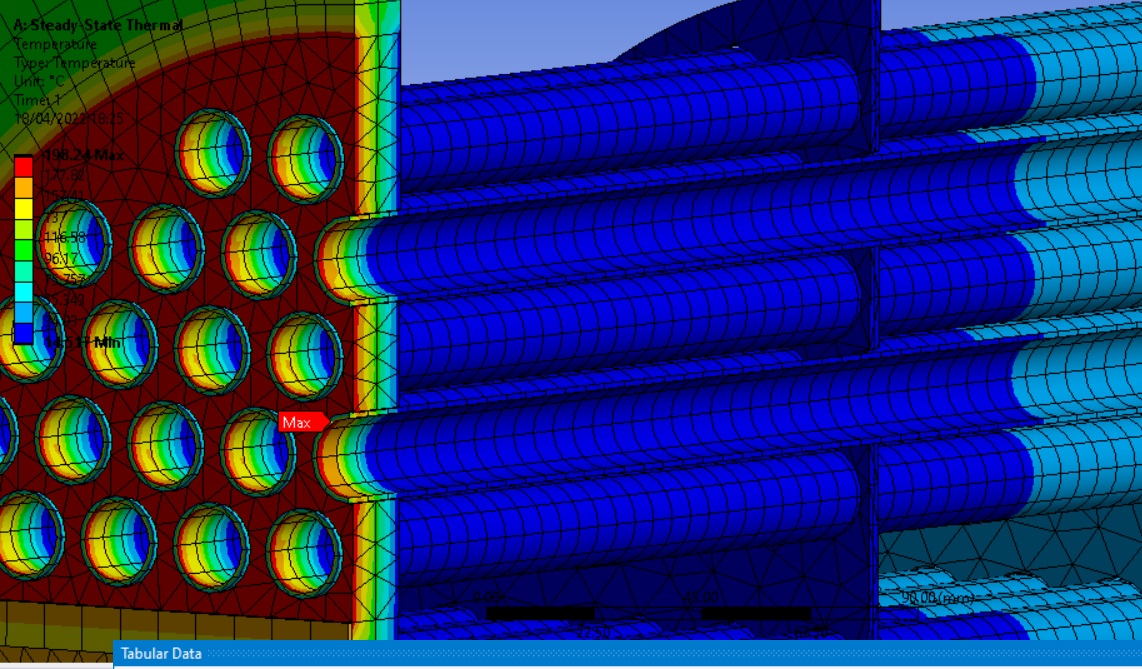TAGGED: thermal, thermal-gradient
-
-
April 18, 2022 at 5:28 pm
charlie_kc
SubscriberHI all,
I am trying to force a thermal gradient to simulate through a tube, however it doesn't appear to be modelling correctly. Ideally what I am trying to achieve is a thermal gradient along the length of the inner surface of a tube (from 194 degrees C to 170 degrees C) and then a thermal gradient along the length of the outer surface of the tube (from 20 degrees C to 145 degrees C).
I have tried to do this by applying temperatures at the respective edges of the tubes, eg:
-Inner surface inlet edge: 194
-Inner surface outlet edge: 170
-Outer surface inlet edge: 20
-Outer surface outlet edge: 145
However a gradient isn't forming along the tubes, and instead its showing the specified temperatures at the ends of the tube, and then ambient temperatures towards the middle. I'm not sure if I am being insanely stupid and missing an obvious boundary condition, or if there is a different type of thermal setting I should be applying to get a thermal gradient.
I have attached pictures of the incorrect thermal solution, so you can see my model, with the left-hand side being the inlet and right-hand side being the outlet.
April 18, 2022 at 10:59 pmpeteroznewman
SubscriberIf you have access to Fluent, make a Steady State model of the fluids around the solid tubes. The boundary conditions of the heat exchanger are simple. There is a hot side inlet temperature and flow rate and a cold side inlet temperature and flow rate. The outlet temperatures of the fluids and the temperature gradient on the solid tubes are calculated in the solution.
To get an accurate temperature gradient, you need more than one solid element through the thickness of the tube. Fluent uses linear elements so mesh 4 elements through the wall thickness.
April 19, 2022 at 9:14 amcharlie_kc
SubscriberThank you very much
Viewing 2 reply threads- The topic ‘Thermal gradient along length of tube’ is closed to new replies.
Ansys Innovation SpaceTrending discussions- The legend values are not changing.
- LPBF Simulation of dissimilar materials in ANSYS mechanical (Thermal Transient)
- Convergence error in modal analysis
- APDL, memory, solid
- How to model a bimodular material in Mechanical
- Meaning of the error
- Simulate a fan on the end of shaft
- Nonlinear load cases combinations
- Real Life Example of a non-symmetric eigenvalue problem
- How can the results of Pressures and Motions for all elements be obtained?
Top Contributors-
3892
-
1414
-
1241
-
1118
-
1015
Top Rated Tags© 2025 Copyright ANSYS, Inc. All rights reserved.
Ansys does not support the usage of unauthorized Ansys software. Please visit www.ansys.com to obtain an official distribution.
-












